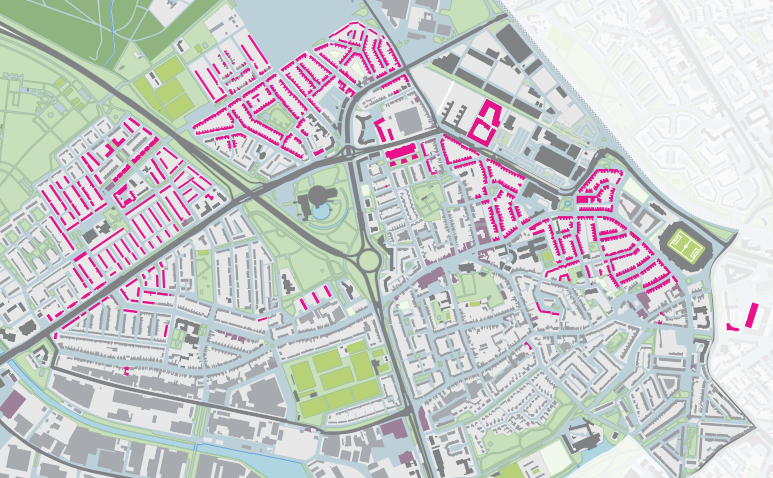

 City area plan Strijp_Urban and intimate living in Strijp
City area plan Strijp_Urban and intimate living in Strijp
City area Strijp is constructed from old Philips districts, the foundations of Eindhoven. Corporation Woonbedrijf manages more than half of the 6000 houses in Strijp. Woonbedrijf knows a lot of people in the 22 neighborhoods. Sometimes it’s difficult to zoom out to district level. 12N Urban Matters assisted in this process.
Nowhere in The Netherlands you can see so well the influence industrial revolution had on Dutch urban design. Large factory sites and related working-class neighborhoods alternate in Strijp. Here innovative developments, like transformation and compaction, are booming the last years, because of the new residents, like young designers, home working family counselors and mobile consultants. They don’t live and work in the ‘old Philips age’. Time to take a closer look at city district Strijp: what makes Strijp the living, creative, urban, but also rural, historic district that the corporation wants it to be?
The city district plan has two main goals. On the one hand it connects the social and spatial connections in the separate neighborhoods. Secondly the district plan provides insight to the task and the method of the corporation in Strijp as a district. The problems, challenges and main directions should be made clear for all the Woonbedrijf employees, professional parties and community organizations. In a time of a retreating government and big changes in real estate, the corporation has to take a clear position within the collaboration.
Together with the involved parties 12N entered into the search for the future of Strijp. The search led to three main points in the task and the method: managing, developing and connecting. The managing goes beyond the maintaining of the houses. The vision will expand, like offering chances to residents by means of social support.
The developing of, among other things, wasteland and vacant buildings takes place in the neighborhoods where Woonbedrijf has a lot of property. Property that stimulates cooperation with the municipality and other involved parties that have the same goal. Think of Info-centre Drents Dorp, where renovation of the neighborhood takes place at the temporary information center under an overpass.
The connecting brings coherence in the developments that simultaneously take place in Strijp. Considerations can be made in a better way. What to do with vacant buildings, or where to locate a new supermarket, and who actually has a say in such situations? How can the municipal social analysis of the whole of Strijp be linked to Woonbedrijf’s future plans? Such considerations have been made in the new metropolitan area in the Strijp-S neighborhood and in the development of a widely supported social-spatial vision for the future of the neighborhood Lievendaal.
Download the City Area Plan here: districtsplanstrijp
Commissioned by: Woonbedrijf
With the cooperation of: Timo Bralts – Bestwerk, layout en cartography & Dorot Sobczyck – photography
Period: from Februari 2012

